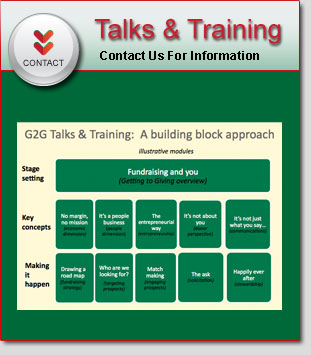Year-end giving is a tradition that goes back to Good King Wenceslas[1]. These days, according to The Chronicle of Philanthropy, nearly half of all donations to nonprofits arrive in the last quarter. That’s a tough way to run a business, and may explain why so many nonprofits end the year with a shortfall.
Most year-end giving is in the checkbook category, which is fine so long as you realize that you’re running a retail campaign and don’t expect many significant gifts. The problem is that they aren’t working, for a number of reasons. Here are a few:
- It’s not when people have the most money. There are many competing priorities, like looming tax payments, family gift giving, and endless holiday events.
- It’s hard to rise above the noise. People are deluged with requests from nonprofits. It’s easy to get lost in the shuffle.
- Giving levels are set by others. If everyone else is asking for $100, it’s hard to get $1,000.
- Tax features are highly over-rated. Some people may see a donation as a last minute tax reduction but we’re in an era of vanishing deductions, especially for wealthier people who pay more capital gains than income tax.
I would suggest by starting with a hard look at your year-end campaigns. How well are they working? (Check the math.) How effective are the methods you use? (Most organizations are finding direct mail increasingly less productive.)
Then, be creative and run some experiments.
How about making your big appeal at the beginning – not the end – of the year? By February, after the 990s and year end statements are done, you can make your case.
“We’re starting a new year, and here’s what we plan to do, with your help” is a compelling message. “Here’s how last year was a success, and how we were a prudent steward of your money” is another.
Another approach is to tie the timing of your annual campaign to your mission. For example:
- For a New England conservation group, that may be spring, when people’s thoughts turn to the outdoors.
- If the goal is to help the homeless, people may respond to pleas in September, as the cold weather approaches.
- Student focused initiatives can link to the school year: at the start, for tutoring; at the end, for summer initiatives.
Not all organizations have seasonal opportunities, of course. Some missions are more event-driven. The American Red Cross and many international aid organizations, for example, are really good at tying big appeals to disasters.
[1] Popular Christmas carol that tells story of king who braves harsh weather to give alms to poor peasant.



